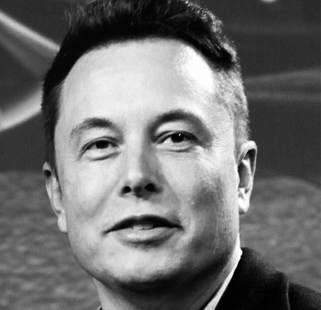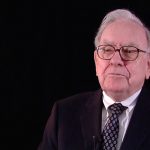Elon Musk’s offer to purchase Twitter caused investors to pummel Tesla, gouging out billions of dollars in Tesla’s market value. Investors doubted he could run both companies equally well, let alone all of his other holdings.
That kind of thinking applied to leaders like Elon is misplaced.
Whether or not Elon actually follows through with the purchase of Twitter, it is more important to understand how his leadership style and capabilities favour multiple endeavours simultaneously.
The Right Leader, Right Now
Elon Musk is emblematic of a leadership style that needs multiple foci at the same time. And if eventually, Elon completes the purchase of Twitter (at present, it’s totally up in the air), he would likely succeed in revamping Twitter, or rather, he would not fail for lack of focus. For what he has set about - an act of re-creation, whether at Twitter or the electrification of cars or putting humans on Mars – he’s hard-wired to succeed.
In our book Right Leader Right Time, we dive into four distinct leadership styles: Fixer, Artist, Builder, Strategist (FABS for short). Match the right leader with the right role in the right organisation, and that’s where the magic happens.
Every great leader has a dominant leadership style and for Elon, he is this age’s premier Artist Leader and preeminent innovator. The Artist is best described as compelled. Driven to create, they view the world as their canvas or a block of clay to be moulded. And if someone’s already moulded the clay, or drawn on the canvas? No problem. They paint over it.
The Artist on your team is likely the renegade – the outsider. It’s easy to look back on an innovative product, design, client pitch, messaging strategy, or technology and think it was obvious. But when the Artist leader is throwing whacky ideas against the wall, they may not be popular, and yet it’s the acts of audacity from the Artist leader that lead to huge progress and exponential leaps.
Elon has a reputation of not playing by the rules, and his proposed/on-hold takeover of Twitter is not earning universal praise. #LeavingTwitter is now trending and Tesla stock dropped by 20% since the announcement. If you think that fazes Elon, you haven’t paid attention to the guy whose thinking extends to saying he wants to die on Mars, just not on impact.
Even large companies are ripe for disruption though, and with many players in the social media landscape competing for your attention, fresh thinking is needed for Twitter — at 217 million users, a fraction of Facebook’s or Instagram’s billions — to survive and thrive into the future. An Artist leader is needed.
The Need for Multiple Canvases
Critics wonder how Elon could effectively lead what seems like an endless list of companies and initiatives. Isn’t this lack of focus and attention a recipe for failure? Not for an Artist. Musk has, gee, how many things going on…Boring Company. SpaceX. Tesla. Mind control. And tweeting nonstop.
For the Artist leader, an ability to paint on multiple canvases in parallel is essential. It’s at the heart of the creative spark and inspiration kick that this type of leader is known for. Da Vinci painted the Mona Lisa, The Last Supper and 25 other masterpieces while inventing the tank, the parachute, and advancing fields as diverse as anatomy, astronomy, cartography, paleontology and hydrology. So in the tech world it’s not surprising that the mastermind behind Twitter, Jack Dorsey, led Square and Twitter at the same time. Steve Jobs had Apple — and Pixar. Silicon Valley legend TJ Rodgers grew Cypress Semiconductor, while championing solar cells at SunPower.
Compare this seemingly divided attention to other leadership styles where distraction would be madness. The Fixer leader, for example, is wired to turn around an organisation or situation in complete chaos or dysfunction. When losses are mounting, employee morale is in the toilet, or some other crisis looms, laser focus is needed on the end goal. Distraction would be deadly.
The Builder leader is wired for market share and taking an organisation, product or service to a dominant position. All efforts are directed at processes, systems and people to accomplish a singular goal. Fixers and Builders are simply too linear to satisfy the Artist’s energies. Fixer or Builder wiring simply is not designed for the kind of distraction Elon lives for. Conversely, attempt to box in the Artist leader into just one thing? It’s impossible — and a recipe for failure.
Elon has a reputation of not playing by the rules, and his proposed/on-hold takeover of Twitter is not earning universal praise.
If Elon both owned Twitter and it could remain a public company, investors might be wondering if they should bet against him, saying he’s just too distracted. Seeing Elon’s wiring as Artist leader, that would be a bad bet in the short term. His compulsion moves him to do exactly what he is doing. As the Zen saying goes, how you do anything is how you do everything.
Your Highest and Best Use
In our work matching organisations with our RED Team of top CEOs, CFOs, CIOs, and other C-Suite executives at InterimExecs, we have seen outsized success from leaders who focus on what is for their highest and best use and reject everything else. Easy to say, hard to do. The vast majority of executives who have approached us have not been a fit for our team. The pattern is clear: they dilute their efforts and take too many leadership role detours in the course of their careers. Too many leaders attempt to be all things to all people, saying yes to any situation, even those in which they are not best applied.
Elon can certainly operate in Fixer, Builder, and Strategist modes, but they are not his highest and best use. And he knows it. When asked about running the company day-to-day during a trial in 2021 to defend his decision to combine Tesla and Solar City, Elon responded: “I rather hate it and I would much prefer to spend my time on design and engineering, which is what intrinsically I like doing.” There was no question what Musk hated, and what he knew of his own nature — what he was drawn to. He knew himself.
If you are wired as an Artist leader, you don’t need anyone to tell you this. Heck, you couldn’t stop even if you wanted to. Mozart said he wrote music the way cows pissed. It just came out.
If Elon buys Twitter, given his Artist wiring, no doubt we can expect in the short term a burst of energy like matter and antimatter colliding — the explosive energy will be visible across the Milky Way. For employees of Twitter wondering how Elon will change the company, it is both good and bad news. The bad news is that he won’t hesitate to cut projects and people he deems misdirected. The good news is that for the go-forward team, things are going to be more exciting than they’ve ever been.
But in the medium term, trouble shows up for the Artist if complementary style leadership modes and people do not come into trusting partnership. That’s the difference between, for example, Tesla and SpaceX a few years ago. Tesla had many visible hiccups. SpaceX, despite many rockets blowing up early on — not as much drama. Why? Because at SpaceX Elon had Gwynne Shotwell as his trusted partner, a Builder-Strategist par excellence in the role of president. At Tesla in its first big growth spurt? Not so much of anyone around Elon like Gwynne. And the result was lots of staff changes and bumps in the road.
The issue at Twitter will be free speech versus safety, and on that vital issue, let’s hope Elon finds his next Gwynne. Without a comparable Gwynne, a Strategist leader to match Elon’s Artist, big troubles are coming for all of us if the world’s digital town hall falls into disarray. At a minimum, Elon’s first face-off would be with the European Union, which is not going to approve loosening the controls Twitter’s team has elaborately put in place over the past ten years.
Why Would Elon Be Buying Twitter?
The big question here is why Elon Musk would buy Twitter? Let me share my thoughts based on my vast experience of having met him once — a 60-second conversation where I asked him how he landed a $1.7B NASA contract after he blew up four rockets on the launch pad? His wonderfully inarticulate answer matched an equally delightful speech at the Economic Club of Chicago. Elon loves first principles. Let’s do the math on his lifespan principles:
What we already know:
- Number of years Elon has taken to grow SpaceX: 20 (so far)
- Number of years Elon has taken to grow Tesla: 19 (so far)
- What Elon holds dear, he holds long. No giving up.
What the future holds:
- Elon’s prediction for the first crewed flight to Mars: 2029
- My predictions, starting with: The year when Elon goes to Mars: 2039 (in time for his 70th birthday. People think he’s mercurial, but he’s not. He’s Marsupial.)
- The first thing Elon will do when he lands on Mars: tweet.
- His first tweet from Mars: NDOI (Not. Dead. On. Impact.)
Conclusion
Thinking like William Randolph Hearst, Elon knows he needs to control the media in order to control the conversation, even from 33.9 million miles out. When you already have 85 million followers, Earth is not enough.
If he could own and hold Twitter for the next 17 years (granted, extremely unlikely), never mind world domination, it’ll be solar system domination. And the most momentous, most awaited tweet in history.
About the Author
Robert Jordan created Online Access, the first Internet-coverage magazine worldwide, landing on Inc’s 500 fastest-growing company list. After the sale of the magazine, he launched InterimExecs RED Team (Rapid Executive Deployment), matching rock star leadership with organisations, owners and investors seeking to achieve extraordinary results. Jordan is co-author of Right Leader Right Time: Discover Your Leadership Style for a Winning Career and Company (G&DMedia, March 29, 2022), author of How They Did It: Billion Dollar Insights from the Heart of America, and publishing partner for Start With No, Jim Camp’s bestseller on negotiation. A lifelong Chicagoan, husband & father, he shares an Instagram account with his dog Norman @Norman.clature.











